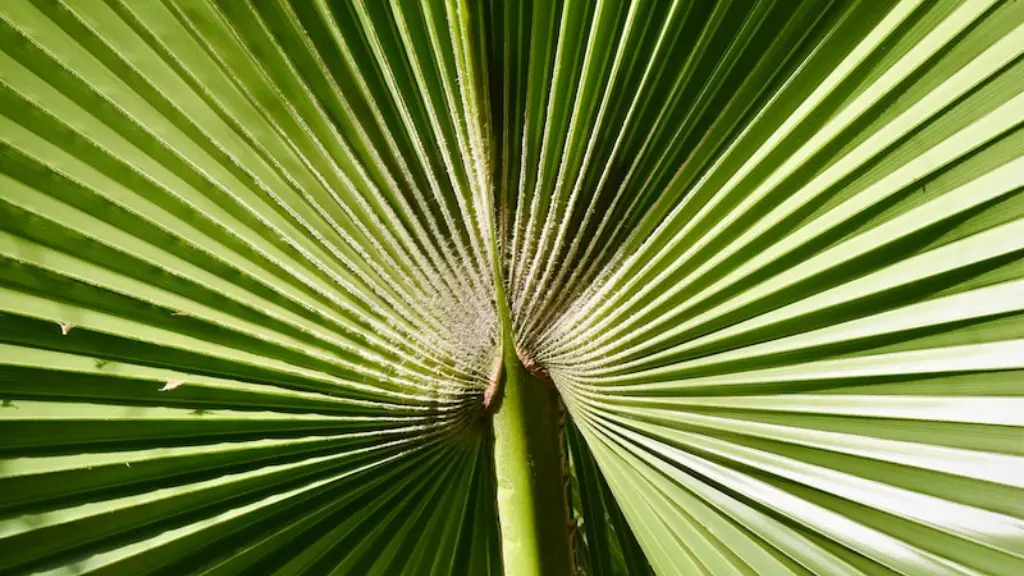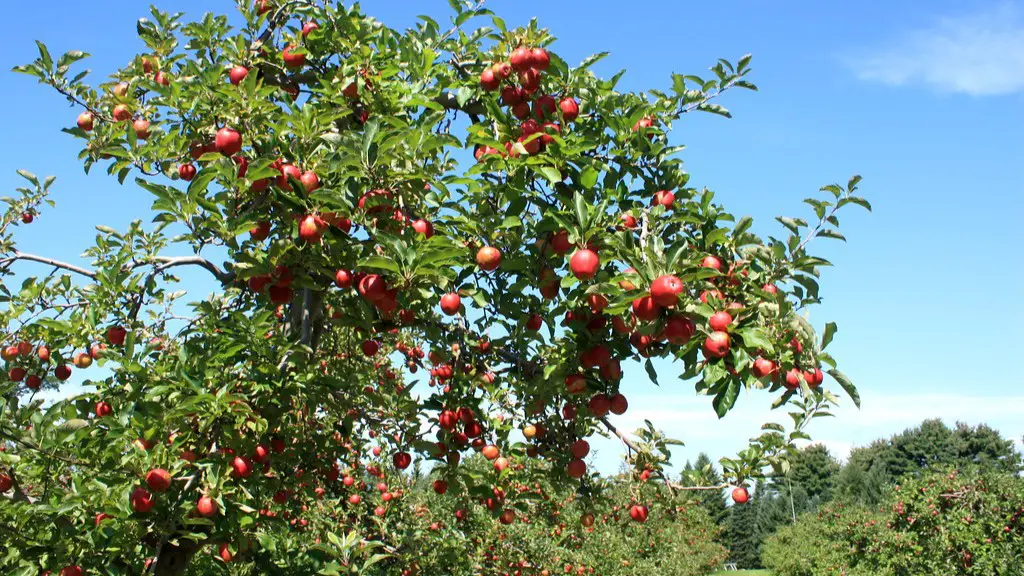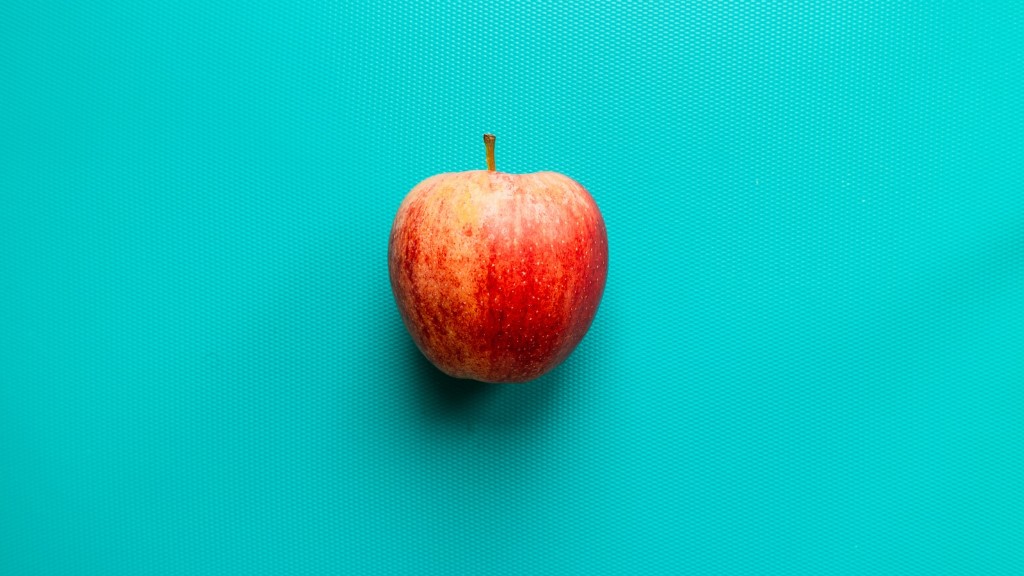Brown spots on apple tree leaves are an indication of apple scab, an infection caused by the fungus Venturia Inaequalis. Apple scab is one of the most common disease affecting apple trees and can cause severe crop losses. In order to recognize this disease, it is important to understand the symptoms, causes and preventative measures.
The symptoms of apple scab typically manifest as small, circular, brown spots on the leaves. These spots cause premature leaf drop, uneven fruit ripening, and stunted growth of the tree. As the disease progresses, the spots may crack and produce a velvety appearance, which can cause even more leaf drop and twig dieback, resulting in significant tree damage.
Apple scab is caused by the fungus Venturia Inaequalis, a pathogen that thrives in wet and humid conditions. The fungus typically enters the tree through damaged or weakened bark, or it can be spread by insects and wind. Once the fungus takes hold, it can penetrate the leaves, twigs and fruit, leading to the development of brown spots.
Fortunately, there are some steps that can be taken to prevent apple scab. The first is to keep the apple tree’s environment as dry and clean as possible. Keep the surrounding soil free of debris and prune the tree regularly to reduce humidity. Proper watering is also essential; water deeply but infrequently during hot weather to avoid encouraging disease. Additionally, spray the tree with a fungicide as soon as the buds begin to break and continue throughout the growing season.
By understanding the symptoms, causes and preventative measures for apple scab, you can keep your apple trees healthy and free of brown spots. If left untreated, the disease can cause significant damage that could potentially ruin your apple crop. Therefore, it is important to catch the disease early and take appropriate steps to control it.
Organic Fungicide Applications
Organic fungicides are an effective alternative to chemical fungicides in controlling apple scab. The most common form of organic fungicide is sulfur, which provides protection by forming a thin barrier on the apple tree’s leaves that prevents the fungal spores from entering. Other effective organic fungicides include neem oil and copper oxychloride, both of which are applied in a similar fashion as sulfur.
Organic fungicides can be applied early when the buds are breaking and the young leaves are beginning to emerge. This provides a barrier of protection against the pathogen and can significantly reduce the severity of any disease outbreak. Re-applications are recommended multiple times during the growing season, particularly at days when the weather is wet and humid.
It is important to note, however, that some organic fungicides can be highly toxic and should be used with caution. For example, copper oxychloride can cause toxic residues to accumulate on the leaves, which may lead to leaf drop. Therefore, it is important to use organic fungicides only when absolutely necessary and to follow the instructions on the label carefully.
Organic fungicides are an effective method for controlling apple scab and can help reduce the severity of any disease outbreak. By following the application instructions carefully and using organic fungicides in combination with other preventative measures, you can protect your apple tree from disease.
Cultivation Practices
Practicing good cultivation techniques is also a great way to help protect your apple trees from disease. Proper pruning is essential to ensuring a healthy balance of leaves and fruit, and can also help reduce humidity around the tree. Additionally, mulching the tree with straw or bark chips can help reduce the amount of moisture in the soil, further reducing the risk of disease.
Avoiding overcrowding your apple trees is also important for disease prevention. Keeping your trees spaced apart will reduce the spread of fungal spores and other pathogens, as well as increase air circulation, an important factor in disease prevention. Additionally, removing the fallen leaves from around the tree can help reduce the risk of disease.
Finally, it is important to inspect your trees regularly for signs of disease. Pay close attention to the leaves, inspecting for any discoloration, spots or lesions. If any of these symptoms are present, take appropriate steps to control the disease before it can cause further damage.
Good cultivation techniques are essential for preventing apple scab and other diseases. By inspecting your trees regularly and practicing good pruning, mulching and spacing techniques, you can help reduce the risk of disease and protect your apple tree from damage.
Fungicides in Non-Organic Systems
Fungicides are also an effective form of disease control, particularly in non-organic systems where sulfur or other organic fungicides may not be permitted. Synthetic fungicides such as mancozeb are effective in preventing apple scab, and can be applied as soon as the buds begin to break. Re-applications are typically recommended every 7-14 days, depending on the weather, and can provide a barrier of protection against the pathogen.
It is important to note, however, that synthetic fungicides can be quite toxic and should be used only when absolutely necessary. Many of these products can cause harm to both the environment and humans, so take the necessary precautions and be sure to read the label carefully before use. Additionally, these products may not be suitable for use in organic systems, and should never be used in the days leading up to harvest.
Fungicdes can be an effective form of disease control in non-organic systems, helping to protect the tree from damage. While these products can prevent and control disease, it is important to use them only when absolutely necessary and to always follow the instructions on the label carefully.
Preventative Strategies
Preventative strategies are essential for keeping your apple trees healthy and disease-free. Clean up the surrounding soil, prune the trees regularly and practice good watering techniques. Additionally, organic fungicides and synthetic fungicides can provide a barrier of protection against the pathogen, helping to reduce the severity of any disease outbreak.
Additionally, it is important to inspect your trees regularly for signs of infection and take action quickly if any symptoms are present. By understanding the symptoms, causes and preventative strategies for apple scab, you can keep your apple trees healthy and free of brown spots.
Fungal Resistant Varieties
Certain apple varieties are naturally more resistant to apple scab, making them less susceptible to disease outbreaks. Varieties such as ‘Golden Delicious’ and ‘Gravenstein’ are both relatively resistant to the pathogen, although still susceptible. Additionally, some newer varieties such as ‘Jonafree’ and ‘Honeycrisp’ have been bred for superior scab resistance.
If you are looking for an apple variety that is resistant to disease, planting a scab-resistant variety can help to ensure a healthier tree. While scab-resistant varieties are not completely immune to the pathogen, they are generally more resistant and can help to reduce the severity of any disease outbreak.
Ultimately, the best way to protect your apple trees against apple scab is to understand the symptoms, causes and preventative measures. A combination of cultural practices and the use of fungicides, when necessary, can help to reduce the risk of disease and keep your apple trees healthy and free of brown spots.





